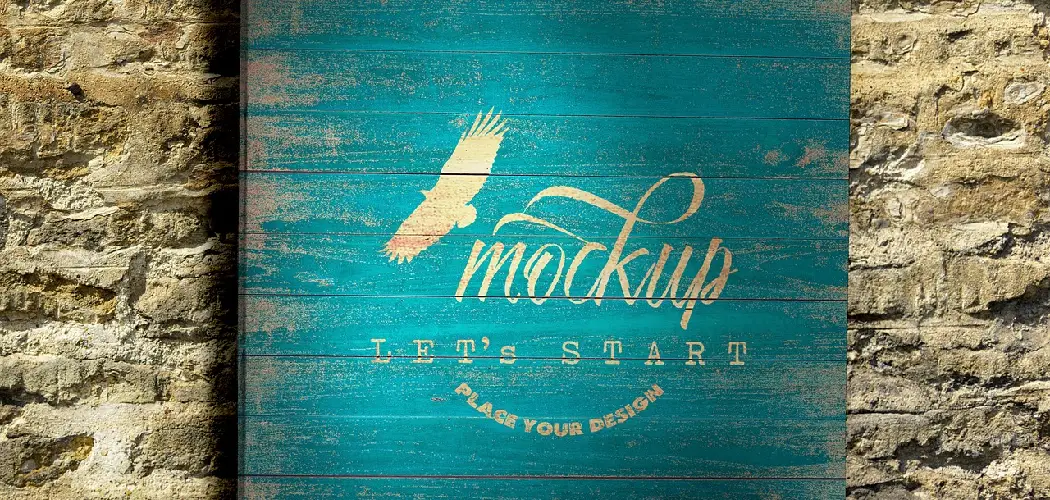Have you ever tried painting a stencil on wood and been left feeling frustrated with the results? If so, you are definitely not alone! Stenciling can be an incredibly rewarding art form that produces stunning home decor pieces, but unfortunately, it can also come with its challenges – one of which is paint bleeding outside of the stencil lines.
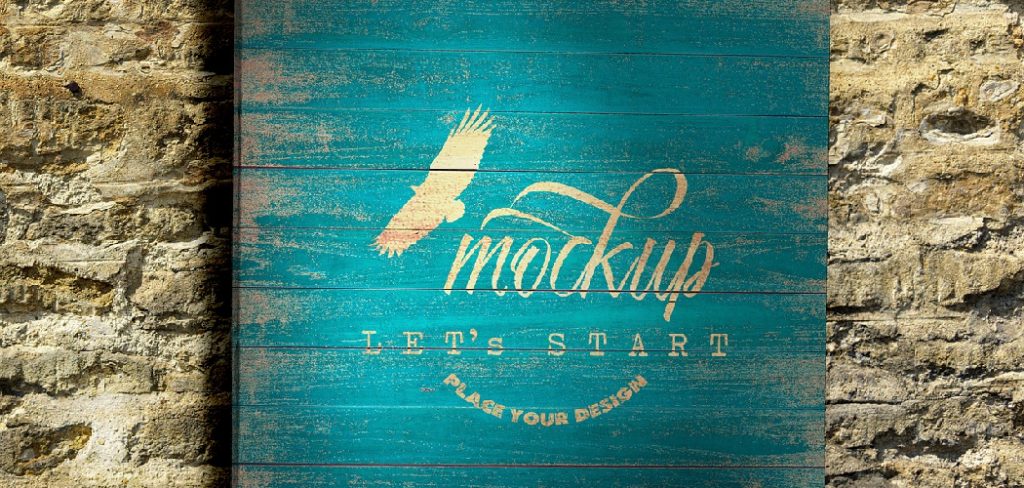
Don’t give up hope though as we have discovered some clever tricks to help prevent this from happening when Creating your next masterpiece. In this blog post on how to stencil on wood without bleeding, we’ll discuss how to use just a few simple materials and techniques to ensure that your project comes out looking perfect every time!
Needed Materials
Given below are the supplies that you will need for your stenciling project:
- Stencil
- Painter’s Tape
- Small Roller/foam Brush
- Acrylic Paint
- Sealant/varnish (Optional)
11 Step-by-step Guidelines on How to Stencil on Wood Without Bleeding
Step 1: Prepare the Surface
The first step in stenciling is to make sure your surface is adequately prepared. This includes sanding any rough edges if needed and then wiping the surface down with a damp cloth to remove any dust. Once the wood has dried completely, you can begin stenciling.
The surface should always be clean and dry before you start. If you’re using a piece of furniture, make sure to remove any drawers and hardware before stenciling. But if you don’t have drawers, then just tape them off with painter’s tape to avoid any unwanted paint splatters.
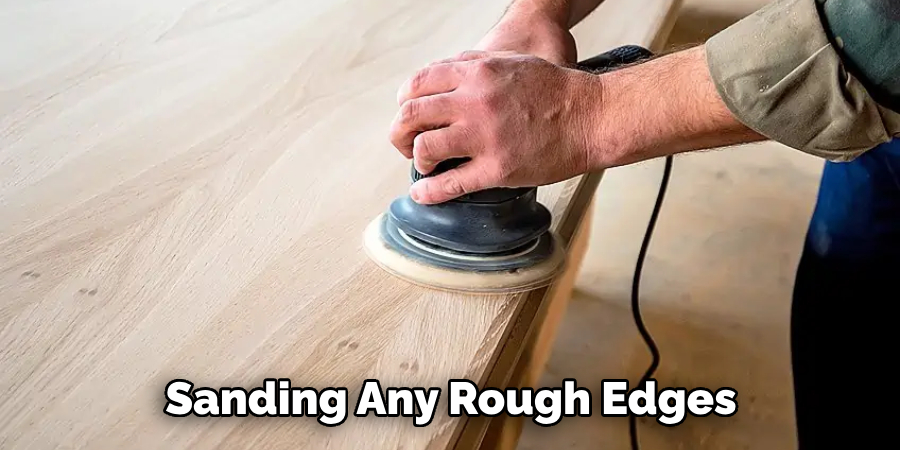
Step 2: Secure your Stencil
Once the wood is prepped, it’s time to secure your stencil in place. You can do this by using painter’s tape on all sides of your stencil. Make sure that the edges are sealed properly so that no paint seeps underneath. You could also use spray adhesive if you want extra security.
But make sure to use a piece of paper or cardboard between the stencil and the wood, as this will prevent any residue from sticking to your project. If you are using multiple stencils, then make sure that they overlap just enough to prevent any paint from bleeding through.
Step 3: Apply a Primer Coat
Applying a primer coat will help seal any porous surfaces, which can cause bleed-through when you apply the stencil. A thin layer of gesso or an acrylic matte medium can both work as excellent primers for your stenciled wood surface. Allow the primer to dry completely before moving on to the next step. You may need to apply multiple coats if you are using a porous surface, such as raw wood.
Step 4: Use a Small Roller or Foam Brush
When you are ready to start stenciling, use either a small foam roller or a soft flat brush to apply even layers of acrylic paint onto your stencil. Remember not to overload your roller or brush with too much paint as this can lead to bleeding underneath the stencil. This can also cause your stencil to stick and become difficult to remove. It’s better to apply multiple thin layers of paint than one thick layer.
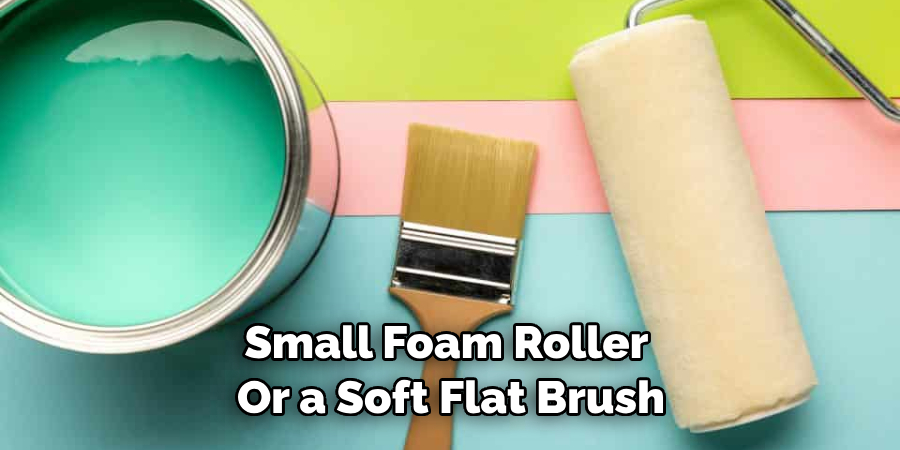
Step 5: Dry Brush
Once you have applied your initial layer of paint, use a dry brush technique to add an extra layer for added texture and depth. This will help prevent any further paint from seeping under the stencil lines. But keep in mind that the less paint you use, the better. You just want to add a light touch to complement your project’s design. However, if you still have some paint seeping through, then the dry brush technique should help to prevent this.
Step 6: Allow Time for Drying
As with any painting project, it is important to give each layer time to dry completely before moving on to the next step. This will help prevent smudging and ensure that your stencil looks perfect when you are finished. You can also use a fan or blow dryer to speed up the drying process. It is especially important to allow the primer to dry completely before moving on.
Step 7: Remove Your Stencil
Once all of the layers have dried, carefully remove your stencil. This is one of the most important steps in avoiding any potential paint bleed! If you are using adhesive-backed stencils, use tweezers to slowly and carefully pull them off the wood surface. It is best to pull in one direction, taking care not to rub or scrub the stencil. If you’re using painter’s tape, slowly peel it off from one corner and use an eraser or a damp cloth to remove any residual paint that may have gotten stuck underneath.
Step 8: Touch Up Any Areas as Needed
Once your stencil has been removed, take a close look at your project and touch up any areas that need a bit of extra attention. A fine-tipped brush can be helpful for more intricate details. But be sure to use a light touch as any excess paint can cause your design to look muddled and messy. You can also use a damp cloth to fix any mistakes.

Step 9: Apply a Clear Sealant (Optional)
If you want to ensure your stenciled wood surface is protected from the elements, consider applying a clear sealant or varnish. This will also help extend the life of your project and make it easier to clean in the future. However, it is important to make sure your project has completely dried before applying any sealant. You should also consider using a non-yellowing varnish for light colors, as this will help them stay bright and vibrant for longer.
Step 10: Allow Time for Drying Again
Just like with the primer, you want to make sure that any sealant or varnish is completely dry before you move on to the next step. See if you can find a sealant that is specifically formulated to dry quickly, as this will make your stenciling project much more efficient. Although it’s important to be patient and allow each layer to dry completely, this is especially true when using a sealant.
Step 11: Enjoy Your Masterpiece!
You did it! You have successfully created a beautiful piece of art using stencils and wood. Now all that’s left to do is enjoy the finished product. If you are feeling inspired, why not explore some of the other amazing stenciling projects out there and see what else you can create? Always remember that practice makes perfect, and with enough patience and dedication, you can make any project look professional. So go ahead and start stenciling!
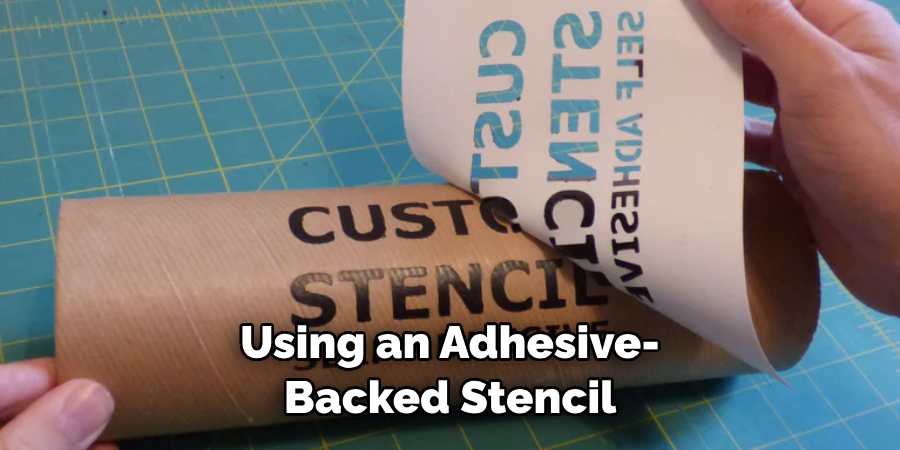
Following these steps on how to stencil on wood without bleeding will help you achieve a professional-looking piece every time. Just remember to prepare your surface properly, use the right tools and materials, and give enough time for each layer to dry before moving on to the next step. With practice and patience, you’ll soon be creating beautiful works of art with stencils and wood!
Tips
- When You’re Stenciling, Make Sure to Work in Small Sections So That the Paint Doesn’t Dry Before You’ve Finished.
- If You Are Using an Adhesive-backed Stencil, Use Tweezers to Avoid Tearing It When Removing It From the Wood Surface.
- Experiment With Different Colors and Techniques for Added Textures and Depth. This Will Give Your Project a Unique and Interesting Look.
- Consider Applying a Clear Sealant or Varnish for Extra Protection and Durability.
- Have Fun! Stenciling Can Be a Great Way to Express Your Creativity, So Don’t Be Afraid to Get Creative With Your Projects!
Do You Need to Use Professionals?
Although it is possible to stencil on wood yourself using the tips given above, some may find that it is easier and more efficient to hire a professional for their project. Professional stencilers have years of experience in the art of stenciling and can help create fantastic designs with beautiful finishes.
This type of work usually involves intricate details that require precision and skill, which can be hard to achieve without the help of an experienced professional. If you decide to hire a professional for your project, make sure that they have the necessary experience and are able to provide references or samples of their previous work. With a bit of research and careful consideration, you’ll be sure to find someone who is perfect for your project!
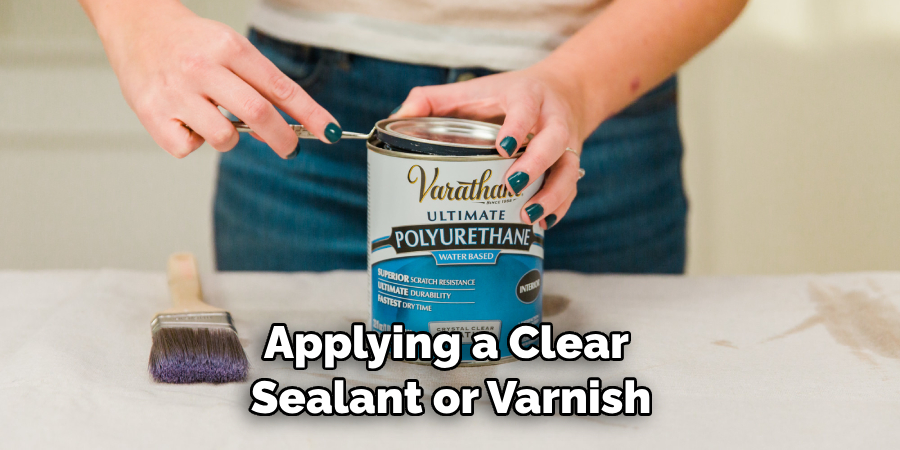
How Much Will It Cost?
The cost of a professional stenciling project will vary depending on the size and complexity of your project, as well as the materials being used. Generally speaking, the more intricate or detailed the design is, the more expensive it will be to hire a professional.
Make sure to get quotes from different professionals before making any decisions. This way you can compare prices and make sure that you are getting the best value for your money. Keep in mind that even if you choose to do the project yourself, there will still be some costs associated with materials and supplies.
So whether you decide to take on this project yourself or hire a professional, keep these tips in mind to help you create a stunning piece of art using stencils and wood. With a bit of patience and practice, you’ll be sure to make something beautiful that will last for years to come! Good luck!
Frequently Asked Questions
Q: What Tools Do I Need to Stencil on Wood?
A: You will need a variety of tools, such as a small foam roller, a stencil brush, and an adhesive-backed stencil. You may also want to use a fine-tipped brush for more intricate details and a clear sealant or varnish for extra protection.
Q: How Long Does It Take to Stencil on Wood?
A: The amount of time it takes will depend on the size and complexity of your project. Generally speaking, smaller projects can take anywhere from a few hours to a few days to complete. Larger projects may take longer. Make sure to factor in drying time as well, since each layer needs plenty of time to dry completely before you move on to the next step!
Q: What Types of Wood Can I Use?
A: You can use any type of wood for stenciling, as long as it is smooth and free from imperfections. Plywood, MDF board, or hardwoods are all good choices. Make sure to sand the wood first so that your paint won’t bleed.
Q: How Do I Avoid Paint Bleeding?
A: The best way to avoid paint bleeding is to ensure that your wood surface is properly prepared. Sand the surface and make sure it is smooth and free from any imperfections.
You should also use a primer before you start stenciling, as this will help keep the paint in place. Finally, make sure to use an adhesive-backed stencil and press it firmly onto the wood before applying the paint. With these steps, you should be able to avoid any paint bleeding on your project!
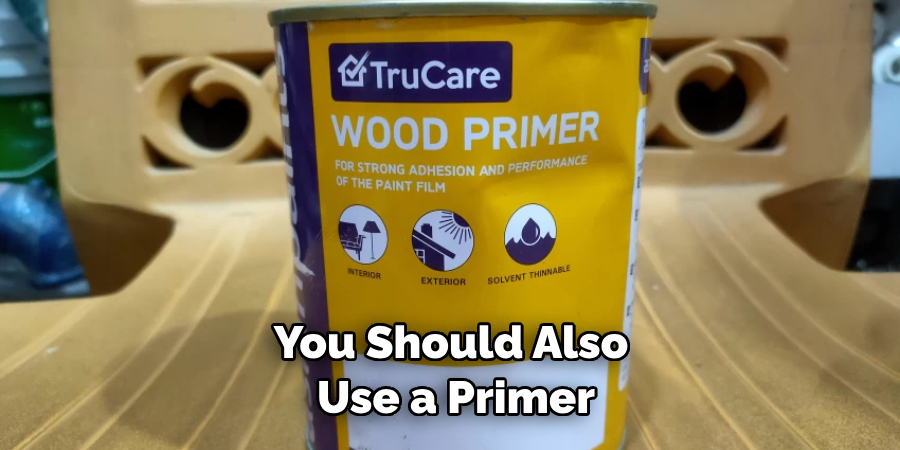
Conclusion
Stenciling on wood may seem like an intimidating task, but with the right supplies and technique, you can easily create beautiful designs. All you need before getting started is a stencil design of your choice, some wood, a few helpful tools, and a little bit of patience! With the correct steps laid out and a few tricks up your sleeve, you’ll be well on your way to gorgeous stencils with no bleeding in no time!
Furthermore, on how to stencil on wood without bleeding, it’s important to remember that practice makes perfect – so don’t get discouraged if it takes a few tries to get it just right. Although there are lots of different methods of stenciling wood without bleeding, the best one is ultimately up to you. Have fun exploring colors, patterns, textures – whatever you choose – and make sure to share your results with us!

